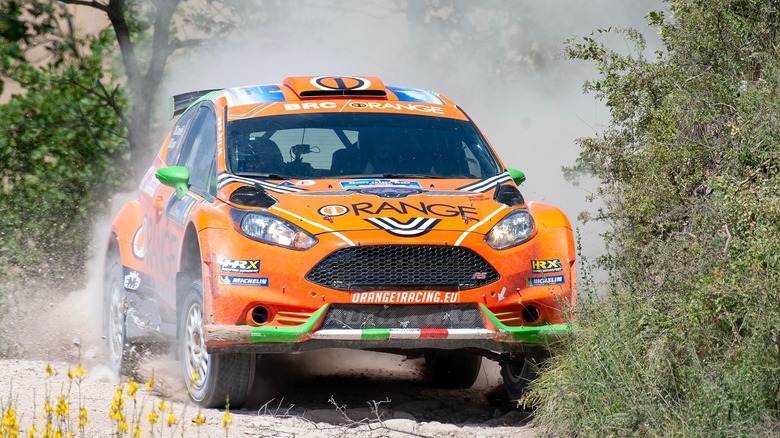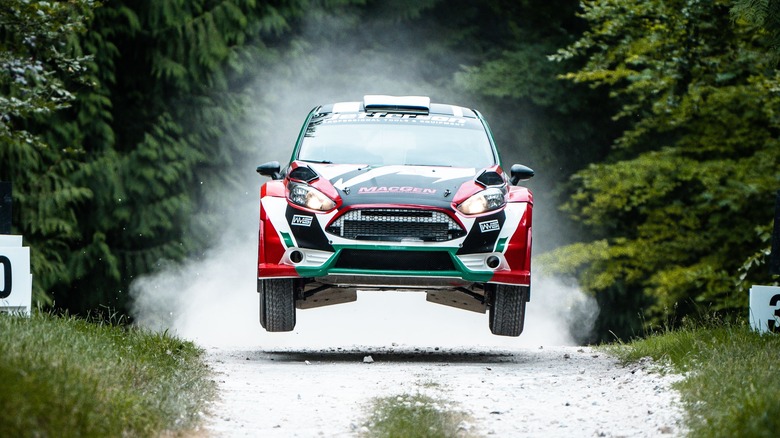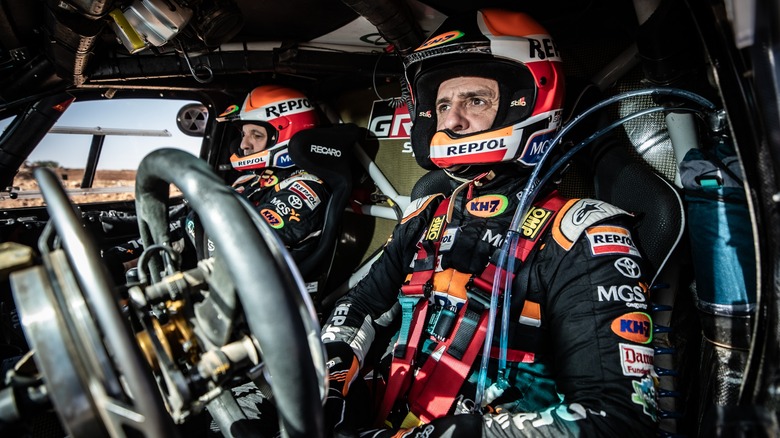
lorenzacciuss/Shutterstock
Rally events have been around for more than a century and provide a means for drivers’ to truly test their mettle while entertaining crowds of onlookers. Rallying has never been without a dose of extreme risk, especially during the Group B era that created some of the gnarliest racecars that were eventually banned, like the infamous Ford RS200. If you can’t manage to catch a rally in person, some events are televised, and motorsport video games continue to be a staple in the medium. On Steam, the popular online gaming platform, DiRT Rally 2.0 earned $26,077,494, according to Steam-Revenue-Calculator.com. However, many might not completely understand what the rally co-driver is saying when relaying information to the driver. For example, the numbers can indicate the severity of an upcoming turn and also distance in some cases.
Advertisement
These instructions are called pace notes and are created prior to the event after doing a scouting run of the course. These pace notes are quickly written on notebook paper, which the co-driver then reads from and can look like this: «Jmp ! > R 3 opens to 40.» Fortunately, pace notes aren’t as complex as they may seem, and once you learn how to interpret them, watching a real event will be more enjoyable, and your performance in games like DiRT Rally 2.0 can improve.
Turns and speed
During a rally, robust performance cars are hitting unbelievable speeds on a variety of narrow trails with hazards around every bend. Unlike other motorsports like NASCAR, rally drivers can’t always see the road ahead, and that’s where the co-driver or navigator becomes essential. The co-driver might call out something like «right 4» among a slew of other directions. He’s announcing both the direction the driver needs to turn and providing a number to indicate how sharp the corner will be. A turn of «1» indicates it’s a very sharp corner, while a «5» would denote a gentle turn.
The number associated with the upcoming corner is crucial for the driver because it informs them how fast or slow, they can navigate the turn. The lower the number, the slower the car must be traveling to successfully handle the curve. To help players many rally games will even display an icon on the top of the screen along with the co-drivers’ vocal instructions offering a visual guide to the severity of the upcoming twist in the road.
Advertisement
Details, distances, and cutting

Wirestock Creators/Shutterstock
While a direction and a figure describing the sharpness of an upcoming turn is helpful, a co-driver will also pepper in additional details that aid the driver. For example, instead of describing a forthcoming corner as a «1,» the co-driver may call out «Hairpin,» meaning a very tight turn requiring additional braking. Also, sometimes, a lengthy corner will have different characteristics at its start versus its end. For example, a corner may begin gently, sharpening further on, so the co-driver might call out something like, «Left 5 tightens to 2.»
You may have heard rally co-drivers announce larger numbers, such as «Hairpin left 200.» The larger figure at the end indicates that following a sharp corner, there is a 200-yard straightaway the driver can anticipate, allowing for acceleration out of the turn. These distance figures allow quick planning and reaction from the driver that can shave precious seconds off their time.
Sometimes, a co-driver will call out something like, «Don’t cut,» which is critical in preventing what could be a race-ending crash. Drivers can also navigate a sharp corner or twist more directly by going off the road just a bit. However, off-road obstacles like boulders can spell disaster for an unaware driver. So, in areas where obstacles are present, but the driver may want to cut the corner a bit, the navigator will warn them, «Don’t cut.»
Advertisement
Putting it all together

cristiano barni/Shutterstock
While not every rally term was described above, you should now have the basics covered. However, comprehending a whole list of navigator instructions will still take some practice. The pace notes example above, «Jmp ! > R 3 opens to 40,» would be spoken, «jump, caution into right 3, opens to 40.» So, in as few words as possible, the driver knows there is an upcoming jump requiring caution, and following the jump will be a moderately sharp right turn, then there is a straightaway for 40 yards.
Advertisement
Once you understand pace notes, you realize much of the victory rests on the shoulders of the co-driver. While interpreting and reading the pace notes, the navigator is also subject to all the forces inside the rally car as it careens through a winding course at speeds in excess of 100 mph. Believe it or not, if you want to experience rallying for real, you don’t need a million-dollar car. There are several options when choosing the best rally cars for beginners on a small budget. But remember to choose your navigator carefully.